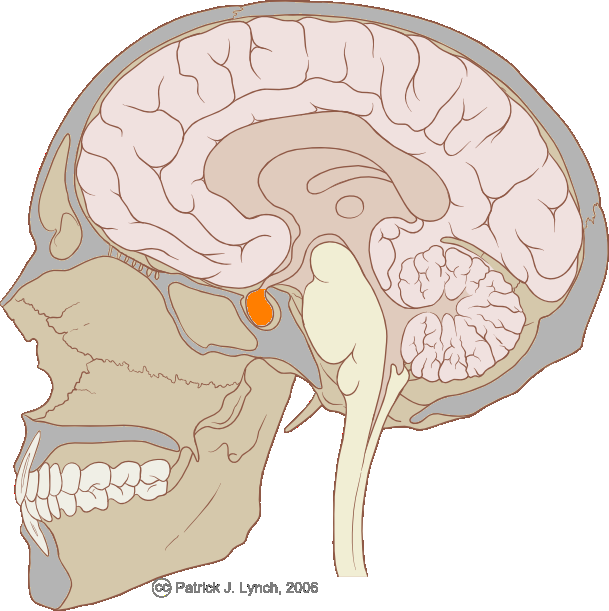-
 Codet
Codet
-
 Bridge
Bridge
-
 Carbonate rock
Carbonate rock
-
 NOAA
NOAA
-
 Breadfruit
Breadfruit
-
 Solar time
Solar time
-
 Phylogenesis
Phylogenesis
-
 Scambaiting
Scambaiting
-
 Unbundling
Unbundling
-
 Germinal layer
Germinal layer
-
 Adrenaline
Adrenaline
-
 Registrar
Registrar
-
 Crystal face
Crystal face
-
 Great Red Spot
Great Red Spot
-
 Caulinary
Caulinary
-
 Acusia
Acusia
-
 Emetic
Emetic
-
 Ion exchanger
Ion exchanger
-
 Minitel
Minitel
-
 Lagrangian
Lagrangian
-
 Omnivore
Omnivore
-
 Corolla
Corolla
-
 Forums
Forums
-
 CRL
CRL
-
 Whitebeam
Whitebeam
-
 Erythematous
Erythematous
-
 Biofilter
Biofilter
-
 SEOF
SEOF
-
 Sub-unit
Sub-unit
-
 Maltitol
Maltitol
Pituitary gland
The pituitary gland is part of the central nervous system.
Function of the pituitary gland
The pituitary gland is an endocrine gland located in the brain, which responds to stimuli from the hypothalamus, producing specific hormones which are released into the blood:
- Adrenocorticotropic hormone (ACTH);
- thyroid stimulating hormone (TSH), which stimulates the secretion of thyroid hormones;
- somatotropin (GH) which stimulates cell growth;
- prolactin (PRL), which stimulates milk production;
- gonadotrophins (sex hormones), lutenising hormone (LH) and follicle-stimulating hormone (FSH);
- endorphins, molecules giving a sense of well-being;
- melanocyte-stimulating hormone (MSH) which stimulates production of melanin.
Structure of the pituitary gland
The pituitary gland is a gland the size of a pea weighing 0.5 grams and connected to the hypothalamus by a stem known as the pituitary gland stalk. The pituitary gland is divided into two lobes:
- The anterior pituitary gland (adenohypophysis) in front;
- the posterior pituitary gland (neurohypophysis) behind.
The posterior pituitary gland is a projection of the hypothalamus which stores and releases ocytocin and vasopressin.
Different cell types produce each of these hormones.
 The pituitary gland is an endocrine gland that controls various biological functions. The pituitary gland is located in the middle of the brain and is closely connected to the hypothalamus. © Patrick J. Lynch / Licence Creative Commons
The pituitary gland is an endocrine gland that controls various biological functions. The pituitary gland is located in the middle of the brain and is closely connected to the hypothalamus. © Patrick J. Lynch / Licence Creative Commons
Latest
Fill out my online form.



